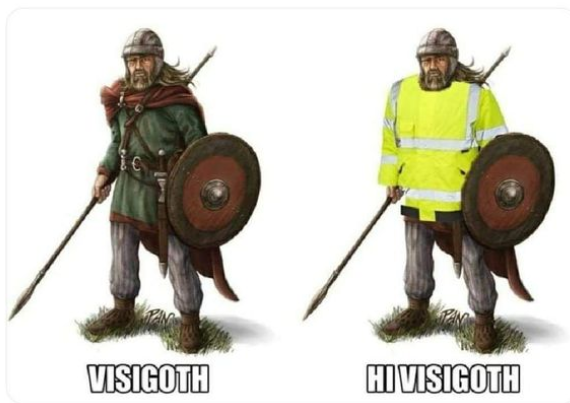
This made me laugh!


The Past brought to Life

So, at Hierapolis there is an amazing rock formation and the reputed Gateway to Hell. Pliny visited and reported that Priests took an animal to the place of sacrifice, and the animals just keeled over and died while the accompanying Priests survived to tell the tale.
Recent investigation has shown it to be a volcanic vent which, at times, is 80% toxic CO2. The suggestion is that the animals with their noses to the ground got a fatal dose while the priests lived to walk away.
This is the BBC web site with some great photos and below is the text from Salon IFA the newsletter of the Society of Antiquaries.
https://www.bbc.com/travel/article/20210629-turkeys-mysterious-portal-to-the-underworld
Foom Salon IFA
The BBC recently reported this fascinating story. The ancient town of Hierapolis, situated in modern-day Turkey, is famous for its dramatic and otherworldly rock formations, known as travertines, which cascade

down the hillside in perfect white basins and waterfalls. Founded in the second century, Hierapolis became a Roman town in 133AD and subsequently grew as a popular spa town, but it was also notorious as the location of the ‘Gate to Hell’, a portal to the underworld.
It was widely believed that Hierapolis was built upon an entry to the underworld, where the three-headed Cerberus bellowed out toxic breath, killing passers-by on behalf of his master, the god of the underworld, Pluto. A shrine, known as the Ploutonion, was built on the site and rituals were held where, as Pliny the Elder and Strabo both describe, priests would lead an animal into the shrine as an offering, and the animal would immediately drop dead while the priest survived. Strabo writes ‘I threw in sparrows, and they immediately breathed their last and fell’.
In 2013, scientists decided to investigate these claims. Hardy Pfanz, a volcano biologist from Germany’s University of Duisburg-Essen wondered if the portal could be a volcanic vent and went to investigate. He found ‘dozens of dead creatures around the entrance’, confirming the histories, and was able to test the air, revealing that the Ploutonion was in fact built on a volcanic vent that spewed out air that was 80% toxic

carbon-dioxide. The town sits on a volcanic fault, which was also the reason for the earthquakes that levelled the city in 17 AD, 60 AD, and again in the 17th and 14th Centuries.
One mystery remained; how did the priests survive and the animals perish? Returning the following year, Pfanz discovered that, in good weather, the carbon-dioxide dissipated quickly, but at night, when it is cooler ‘it pools in the arena, creating a lethal lake of gas at ground level’. He believes that the animals, who had their noses lower to the ground, would have quickly suffocated, while the priests, standing taller would have survived.
Image credits: Travertines, Shutterstock; Ploutonion, BBC Bella Falk
In digging a trench by a water company, they found an early section of the Roman Hadrian’s Wall.
This is the first of a series of reviews of Online Exhibitions. What I am looking for is an online exhibition that I really enjoy the experience of. I want to enjoy wandering around it. I want to feel it is an event, something special. I want something that drives me forward to explore the ‘space’; to discover what is ‘around the corner’. To stop and linger at special ‘places’.
I must say I haven’t found one yet. And my apologies to those who have put their time and effort into their online exhibitions because I will seem over-critical because I am in search of a real on-line exhibition, that is a substitute for the real thing.
Women at the heart of General Practice is by the Royal College of General Practitioners.
It has a simple structure and contains informative text, images, objects, quotations and audio. So, as a resource it is very informative. But as an exhibition it doesn’t really do.
The design is weak, and probably partly at least because it is a web site and the dimensions of the screen change depending on circumstances. This is a major problem graphically. But also it does not have that sense of either wandering around browsing that a real exhibition has; nor the focus that the graphic design and layout of a real exhibition can give. So I am not inspired to put the time and effort in. There are also lots of options of ‘routes’ through the data and, to be honest, I can’t be bothered to do more than sample them. That’s my fault not the exhibition’s but indicative of a structure that I would say is not really an online exhibition, it is rather an online resource. And a good one.
https://www.rcgp.org.uk/women-in-gp
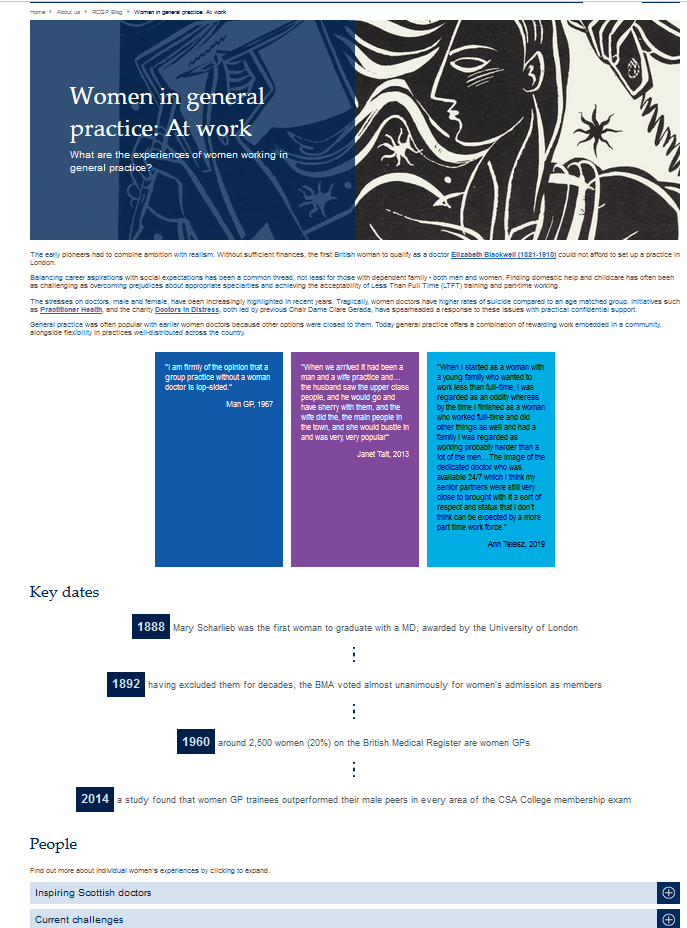
This walk has now been completed but will be rerun soon.
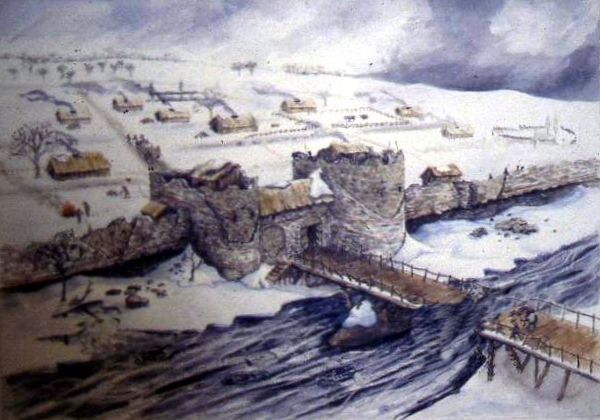
Sunday 4th July 2021 6:30 PM
The Romans gave the name of Saxons to barbarian pirates that plagued the North Sea region in the Late Roman Period. Historians link them with the Angles to create the germanic Anglo-Saxon period of which London was the leading town. But excavation and DNA analysis make the traditional story more difficult to sustain and although the Anglo-Saxons have a rich history how much of it can be trusted? Was there a Dark Age? Or was it just a ‘transistion’? How did English become the main language sweeping aside native Celtic languages? Much of the story of Saxon London has been founded on myth and dubious historical sources, but archaeological, documentary and genetic research has beginning to provide a clearer narrative.
Following the fall of Roman Britain, London was almost deserted. On this walk we explore how London recovered and grew to be the most important City in England by 1066. We will concentrate on the period from 600 AD onwards, and will begin with the story of Lundenwic at Covent Garden. We will then walk along the Strand and Fleet Street to visit the empty City of Lundinium which had a rebirth in the 9th Century as Lundenburgh and which grew to become London – the largest City in the Kingdom by 1066.
This is a London Walks event by Kevin Flude To book click :
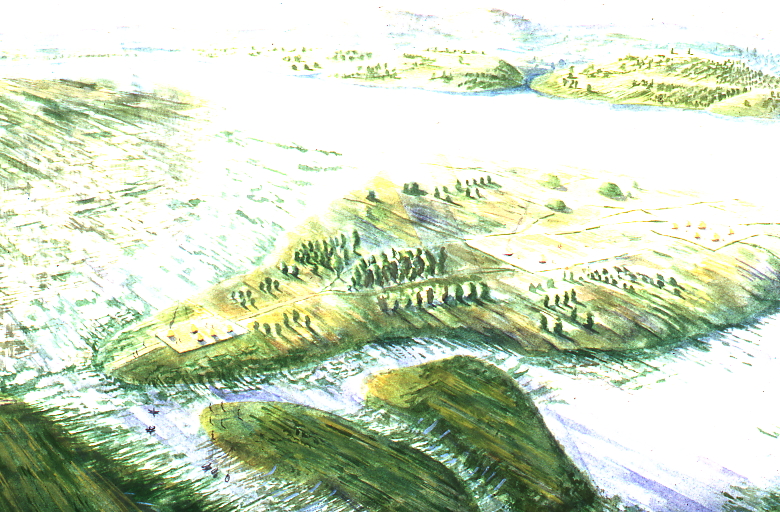
Most Thursdays at 6.30pm City of London
Please note that you need to check it is running this week and book on this link.
This walk tells the epic tale of the uncovering of London’s past by Archaeologists. And provides an insight into the dramatic history of the Capital of Britannia, and how it survived revolts, fires, plagues, and reacted to the decline and fall of the Roman Empire. It became the foremost English City but with periods under Viking and Norman control.
We tell the story in the streets of the City of London, beginning in the valley of the River Walbrook by the Temple of Mithras, and visit many sites where important archaeological discoveries were made, including the Roman Forum, Amphitheatre. Bath Houses, Temples, Roman roads and the City Walls.
We explore the origins of London. The walk is given alternately by Kevin Flude & Leo Heaton
Please note that you need to book this walk.
Here is an introduction to the Saxon London Walk Virtual Walk, taking place this Sunday at 6.30pm. The Podcasts includes Kevin Flude reading contemporary quotations from the end of Roman London and the beginning of Saxon London
I do various walks from time to time, nearly all for London Walks. (A list of all the walks. lectures, study tours I have given can be found here):
JANE AUSTEN’S LONDON
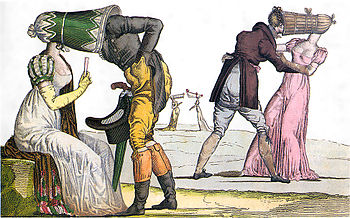
Jane Austen’s London takes place at 2.30 pm on Sunday, July 4th. The meeting point is just outside the Green Park exit (by the fountain) of Green Park Tube.
This is a London Walks Walk. To book click here:
The walk takes in the area of the London section of Sense and Sensibility. This is where Jane Austen frequented when visiting her banking brother, Henry. He lived here during his ‘successful’ period, after resigning as a Captain in the Militia and setting up a bank to help soldiers pay for their commissions. He then did what all good bankers do – went bankrupt and ruined himself, family and friends. His uncle lost 10,000 pounds; his rich brother, Edward Knight lost £20,000. (that is 2/5ths of the fortune of Willoughby’s wife, and equal to the income of Darcy, 100 times the annual income of Mrs Austen after her husband died) i.e. a heck of a lot of money. Jane lost £13.
But this area was also the centre of the Ton – the wealthy elite of Regency London. It was here that the French Royal family, in exile, hung out, and the haunt of Beau Brummel and Prinny, the Prince Regent, loungers in chief who were so well satirised in the figure of Sir Walter Elliot. This is where the Dandies lounged, leered and shopped. Here the rich could get their guns, swords, cigars, snuff, hats, shoes, tailored clothes, uniforms, wine, prostitutes, lovers. They came to visit art galleries, see panoramas of European Cities, to ‘see’ the invisible women living in her glass jar, to choose their Wedgwood pottery.
And what is astonishing is that this is still where the megarich do exactly the same things: hang out and shop. All the top brands are here, and instead of people like John Willoughy are to be found Russian Oligarchs, and the rich of the Emirates, and every other country in the world. And most marvellously many of the shops survive into the present day. The same shops and shop fronts still in use. They catered to the stupidly wealthy of the 18th Century are now catering for the stupidly wealthy of the 21st Century. This is where you can buy luxury yachts.
So we follow Jane and Henry, and see the ghost traces left by immoral Willoughby, sensible Elinor, overwrought Marianne, dull but nice Edward Ferrars, dull and horrible Robert Ferrars, stolid Colonel Brandon, vulgar but kind Mrs Jennings and her unforgivably vulgar daughter Mrs Palmer with her despairing husband; the Middletons, the Steeles gals ruthlessly working their assets. Plus we have a little look at the relationship between Prinny and Beau Brummel, and the terrible childbed of Princess Ch
THE REBIRTH OF SAXON LONDON ARCHAEOLOGY VIRTUAL WALK
Sunday 4th July 2021 6.30pm
An exploration of what happened following the Roman Period. How did a Celtic speaking Latin educated Roman City become, first deserted, then recovered to become the leading City in a germanic speaking Kingdom?
My first virtual walk took place every Sunday at 2pm in August 2020 and was:Myths, Legends and the Archaeological Origins of London in August 2020
and I have since done:
Sunday 25th October 2020 The Archaeology and Culture of Roman London Virtual Walk. For more details click here.
Sunday 1st November 2020 The Decline and Fall of Dark Age London Archaeology Virtual Walk. For more details click here.
Sunday 8th November 2020 The Rebirth of Saxon London Archaeology Virtual Walk For more details click here.
Sunday 22nd November 2020 Flower of Cities All – Medieval London History & Archaeology Virtual Walk For more details click here.
Sunday 29th November 2020. The London of Thomas More and Thomas Cromwell Virtual Walk For more details click here.
Sunday 6th December 2020 The Financial City from Slavery to Hedge Fund Virtual Walk For more details click here.
Sunday 13 th December 2020 Myths, Legends and the Origins of London Archaeology Virtual Walk . For more details of this walk click here.
Walks given recently:
Feb 22 2.30 Bermondsey – Archaeology & History. Bermondsey Tube
7.15 Southwark & Bankside Pub Tour. London Bridge Tube, Tooley St
Feb 1 2.30 Tower Hill to Rotherhithe Riverside Walk. Tower Hill Tube
Feb 2 10.45 Bishopsgate Ward Walk. Liverpool St Tube
Jan 25th 2.30 Wolf Hall London. Liverpool Street Tube
7.15 Blackfriars to Fleet St Pub Tour. Blackfriars Tube
Jan 26 2.30 Romans in London. Monument Tube
2019
Dec 21 10.30 London’s East End – The Peasants’ Revolt to Street Art. Aldgate Tube High Street Exit
2.30 Shakespeare’s London Locations – The places in the plays
Shoreditch High Street Overground Station
Jan 5 10.45 Myths & Legends & the Origins of London. Tower Hill Tube
Nov 23rd 2.30 The City and the Blitz. Moorgate West Tube. For more information
7.15 Hampstead Pub Tour Hampstead Tube For more information
Nov 30th 2.30 In Search of Saxon London. Moorgate Tube. For more information
7.15 Smithfield Pub Tour. Barbican Tube
Myths and Legends and the Origins of London on Saturday at Oct. 5 for details click here
City Backstreets Pub Tour at 7.15 Oct. 5 click here for details
The City and the Blitz on November 23
Decline and Fall of Roman London on Saturday at 2.30 Sept. 28 for details click here:
Chelsea Pub Tour Saturday at 7.15 Sept. 28 for details click here:
Jane Austen’s London 4 May 2019 7.15 Green Park Underground
For more details see blog post:
River Fleet Pub Crawl May 18
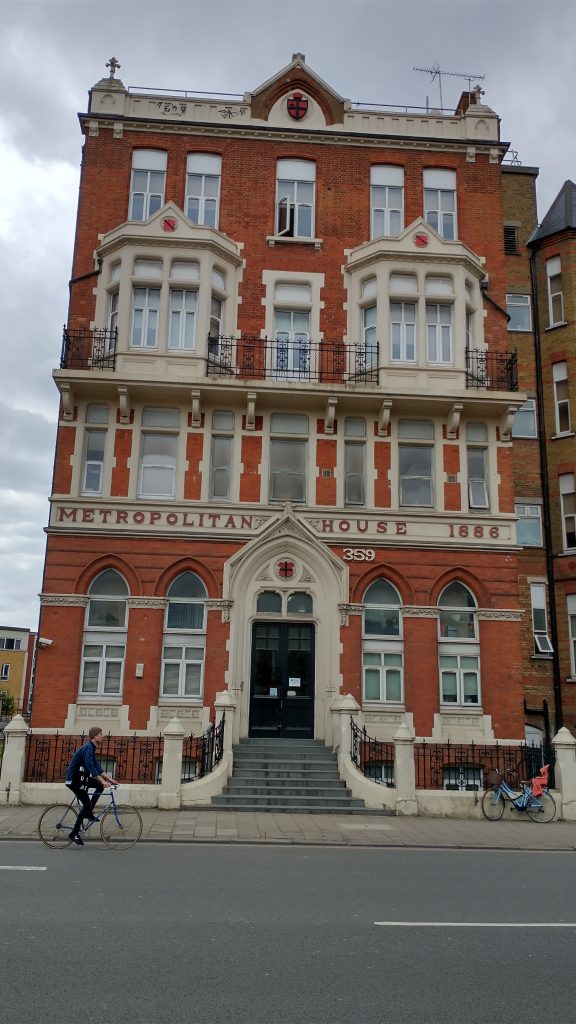
I have walked past this building many times, and only just decided to find out what it was.
It was a Free Hospital, founded by Jonathan Fry, a son of Elizabeth Fry, to provide medical treatment for the poor. It was originally founded in 1836, and had various sites – Carey Street, Bishopsgate, Spitalfields before moving to Kingsland Road Hackney, near my home.
Its mission? ‘to grant immediate relief to the sick poor of every nation and class whatever may be their diseases, on presenting themselves to the charity without letter of recommendation; such letters being always procured with difficulty and often after dangerous delay’.
It became part of the NHS when it was established after WW2 and then closed in 1977.